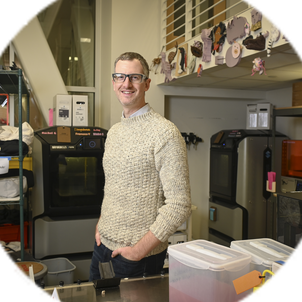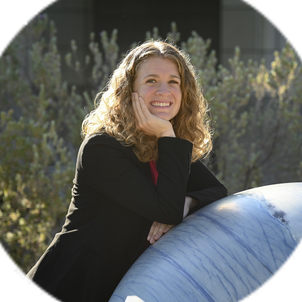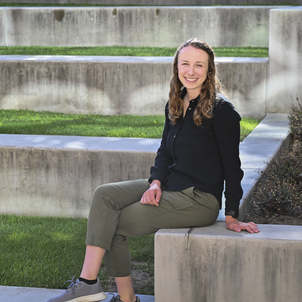Creativity and imagination are two of the most important parts of being an engineer. I love to describe engineering as crafting. In crafting, you have to know how to measure things. You have to figure out how to put things together, and you have to work to understand the properties of your materials and tools (or invent new tools) in order to make something. Similarly, engineers use math, science and specific engineering skills to create new things. As kids, we all loved the creativity found in crafting in one form or another, and without even knowing it, we were all essentially engineers.
My father was an electrical engineering professor and introduced me to the world of engineering. He was playful and creative and gave me free rein in his workshop. We spent hours together tinkering with cars, lawnmowers, computers, modems—you name it. I also would make things on my own. It never occurred to me that there was a perception that engineering wasn’t creative until I was in college. In my experience, engineering was always more than just equations, it was creative problem solving. As I mentor students today, I always strive to highlight the creativity and collaboration found in engineering.
I currently work for Sandia National Labs. Here, I apply my experience and knowledge in multiple branches of electrical engineering to improve a sensing technology known as Synthetic Aperture Radar (SAR). This is a technology that enables the creation of high-resolution 2- or 3-dimensional images of objects or landscapes. Using this technology, we can gather information in conditions where it might typically be difficult for humans to see; e.g., through clouds or fog or at far distances. SAR images have widespread applicability, and we are always working to find new ways to gain more information from SAR. I’ve worked with this technology for over 20 years now and have come to thoroughly understand its strengths and challenges. One challenge is the speed at which images are created. As we’ve found creative ways to make images more quickly, my knowledge of these systems has enabled me to propose innovative solutions to access and also extract information from SAR images. Being able to do this for projects that have national impact is very fulfilling.
Aside from the technical challenges in engineering, I’ve also dealt with the challenges of impostor syndrome—the feeling, especially from others, that as a woman or a minority I am an outsider in the field. When I was a student, that attitude was prevalent, but I didn’t expect that 30 years later when I enter a room, some people would still be surprised that I am the PhD researcher driving a project. That’s why I jumped on this opportunity; I want to be part of something that shows that engineers come from all different backgrounds, ages, genders, etc.
Related spotlights

Dan Somen

Sonia Martin


